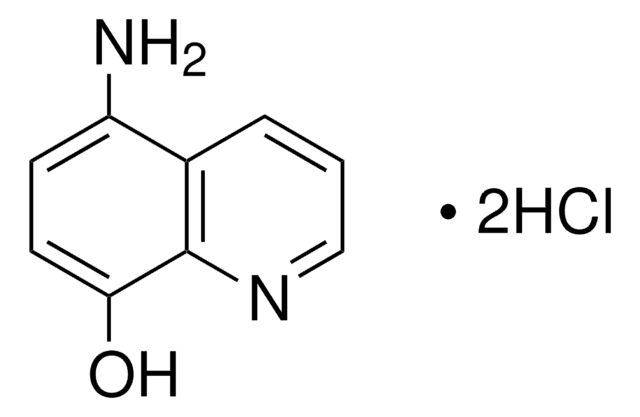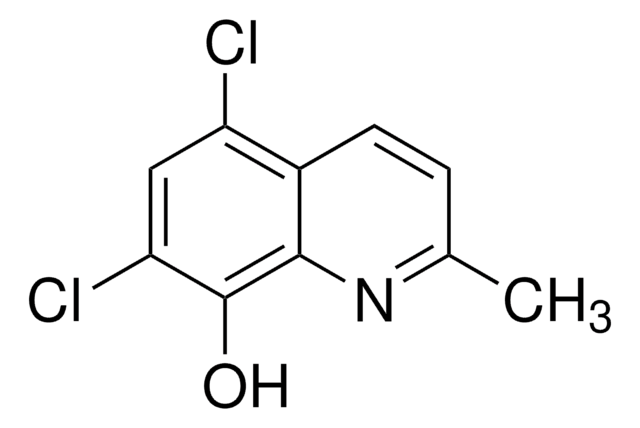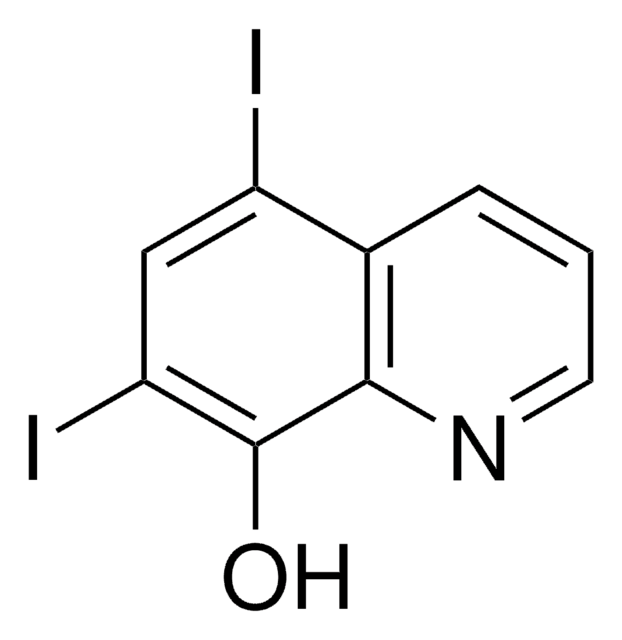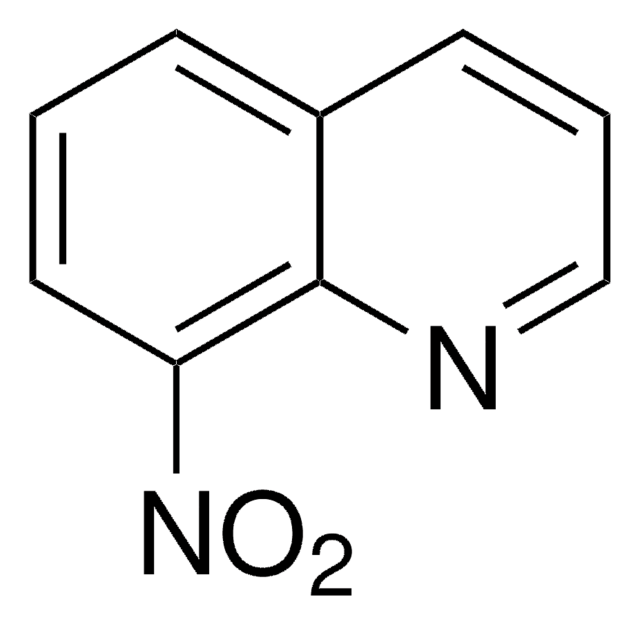140325
8-Hydroxy-5-nitroquinoline
96%
Sinónimos:
5-Nitro-8-quinolinol
About This Item
Productos recomendados
Nivel de calidad
Ensayo
96%
Formulario
powder
mp
181-183 °C (lit.)
solubilidad
alcohol: very slightly soluble
diethyl ether: very slightly soluble
hydrochloric acid: freely soluble (hot)
grupo funcional
nitro
cadena SMILES
Oc1ccc([N+]([O-])=O)c2cccnc12
InChI
1S/C9H6N2O3/c12-8-4-3-7(11(13)14)6-2-1-5-10-9(6)8/h1-5,12H
Clave InChI
RJIWZDNTCBHXAL-UHFFFAOYSA-N
Categorías relacionadas
Aplicación
Acciones bioquímicas o fisiológicas
Palabra de señalización
Danger
Frases de peligro
Clasificaciones de peligro
Acute Tox. 3 Dermal - Acute Tox. 3 Inhalation - Acute Tox. 3 Oral - Eye Irrit. 2 - Skin Irrit. 2 - STOT SE 3
Órganos de actuación
Respiratory system
Código de clase de almacenamiento
6.1C - Combustible acute toxic Cat.3 / toxic compounds or compounds which causing chronic effects
Clase de riesgo para el agua (WGK)
WGK 3
Punto de inflamabilidad (°F)
Not applicable
Punto de inflamabilidad (°C)
Not applicable
Equipo de protección personal
Eyeshields, Faceshields, Gloves, type P2 (EN 143) respirator cartridges
Elija entre una de las versiones más recientes:
¿Ya tiene este producto?
Encuentre la documentación para los productos que ha comprado recientemente en la Biblioteca de documentos.
Los clientes también vieron
Nuestro equipo de científicos tiene experiencia en todas las áreas de investigación: Ciencias de la vida, Ciencia de los materiales, Síntesis química, Cromatografía, Analítica y muchas otras.
Póngase en contacto con el Servicio técnico











